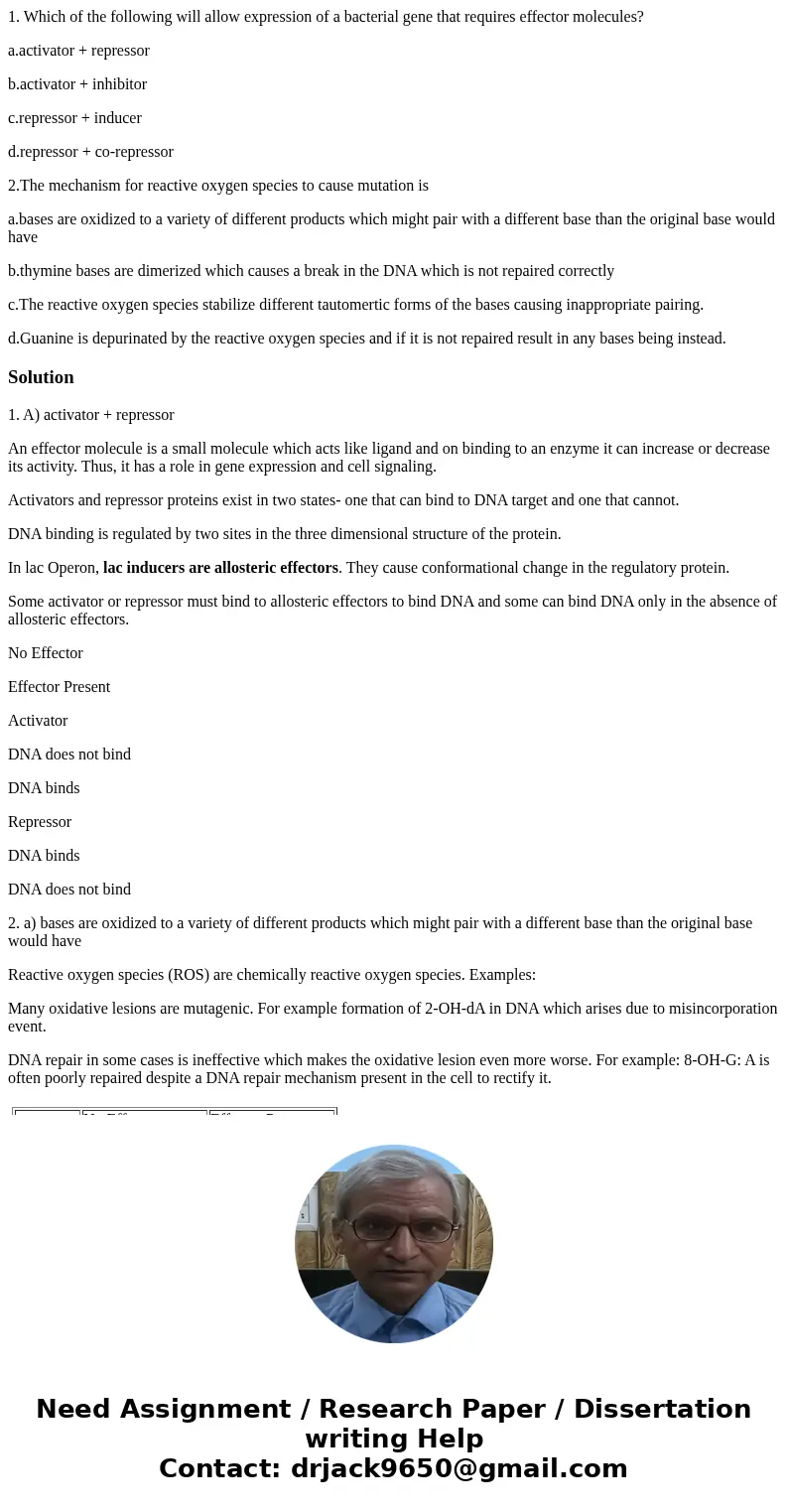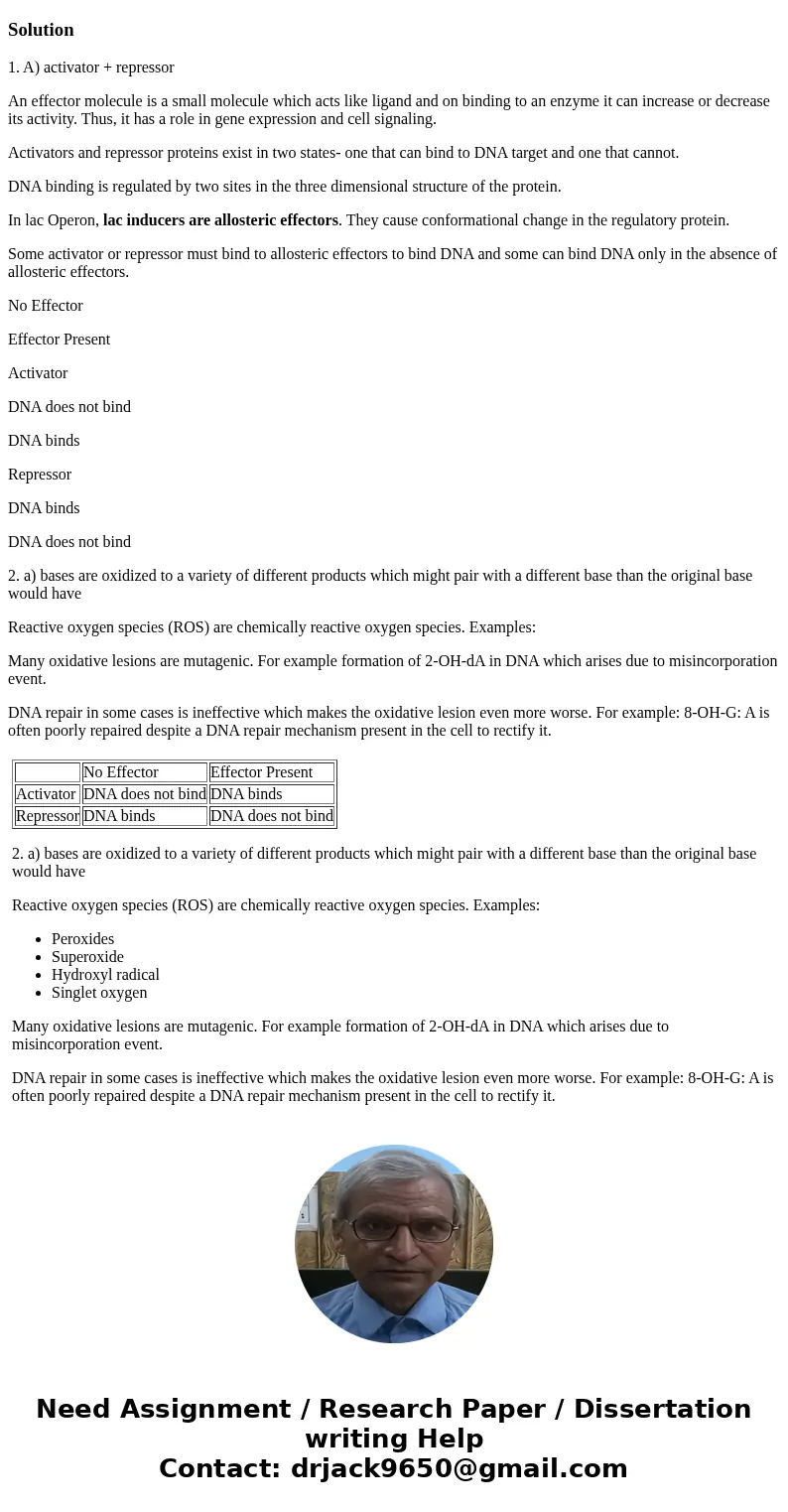1 Which of the following will allow expression of a bacteria
1. Which of the following will allow expression of a bacterial gene that requires effector molecules?
a.activator + repressor
b.activator + inhibitor
c.repressor + inducer
d.repressor + co-repressor
2.The mechanism for reactive oxygen species to cause mutation is
a.bases are oxidized to a variety of different products which might pair with a different base than the original base would have
b.thymine bases are dimerized which causes a break in the DNA which is not repaired correctly
c.The reactive oxygen species stabilize different tautomertic forms of the bases causing inappropriate pairing.
d.Guanine is depurinated by the reactive oxygen species and if it is not repaired result in any bases being instead.
Solution
1. A) activator + repressor
An effector molecule is a small molecule which acts like ligand and on binding to an enzyme it can increase or decrease its activity. Thus, it has a role in gene expression and cell signaling.
Activators and repressor proteins exist in two states- one that can bind to DNA target and one that cannot.
DNA binding is regulated by two sites in the three dimensional structure of the protein.
In lac Operon, lac inducers are allosteric effectors. They cause conformational change in the regulatory protein.
Some activator or repressor must bind to allosteric effectors to bind DNA and some can bind DNA only in the absence of allosteric effectors.
No Effector
Effector Present
Activator
DNA does not bind
DNA binds
Repressor
DNA binds
DNA does not bind
2. a) bases are oxidized to a variety of different products which might pair with a different base than the original base would have
Reactive oxygen species (ROS) are chemically reactive oxygen species. Examples:
Many oxidative lesions are mutagenic. For example formation of 2-OH-dA in DNA which arises due to misincorporation event.
DNA repair in some cases is ineffective which makes the oxidative lesion even more worse. For example: 8-OH-G: A is often poorly repaired despite a DNA repair mechanism present in the cell to rectify it.
2. a) bases are oxidized to a variety of different products which might pair with a different base than the original base would have Reactive oxygen species (ROS) are chemically reactive oxygen species. Examples:
Many oxidative lesions are mutagenic. For example formation of 2-OH-dA in DNA which arises due to misincorporation event. DNA repair in some cases is ineffective which makes the oxidative lesion even more worse. For example: 8-OH-G: A is often poorly repaired despite a DNA repair mechanism present in the cell to rectify it. |


 Homework Sourse
Homework Sourse